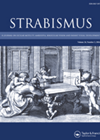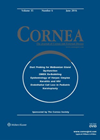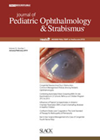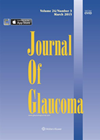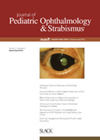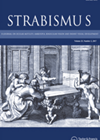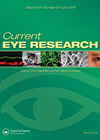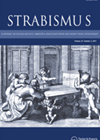You searched for "complaints"
Characteristics of neuro-ophthalmic visual disturbances post-cataract surgery
2 August 2024
| Lauren R Hepworth
|
EYE - Neuro-ophthalmology
The authors present a retrospective case review of adult patients seen by neuro-ophthalmology over a nine-year period. The aim of the study was to identify the cause of neuro-ophthalmic referrals within six months of cataract surgery. Individuals already known to...
Treatment of vertical diplopia in the reading position
This paper describes the use of slab-off prisms for the treatment of vertical diplopia in the reading position. The following data were collected: main symptom complaint, visual acuity, refractive error, binocular vision including sensory fusion and stereoacuity, alternating cover test...Strabismus and scleral buckling
The authors examine the incidence of strabismus following scleral buckle for retinal detachment surgery and the factors that influence the strabismus, its incidence, preventative measures and treatment options. This was a retrospective review of 344 patients (360 eyes) with a...Conjunctivochalasis and aqueous tear deficiency – which one causes symptoms?
This review sought to determine whether conjunctivochalasis (CCh) obliterates the fornix tear reservoir and thus mimics aqueous tear deficiency (ATD). Patients were divided into two groups, with aqueous tear deficiency (CCh +ATD) or without (CCh –ATD), based on results of...Collamer lenses for accommodative ET
Posterior chamber phakic IOL implantation was used to treat patients with accommodative esotropia (ET) with the goal of eliminating hyperopia and producing orthophoria. Three patients (six eyes) aged 18-22 years had an average follow-up of 17 months ±6.24. The mean...Full thickness macular hole after YAG PI
1 April 2015
| Lorraine North
|
EYE - Glaucoma
The authors report a case of macular hole post YAG peripheral iridotomy (PI) of a patient with pre-existing vitreomacular adhesion. Although a relatively safe procedure, some anterior segment complications are well documented such as corneal endothelium damage, rise in IOP,...
Childhood headaches
The goal of this study was to compare headache resolution in children receiving or not receiving refractive correction. The authors conducted a retrospective review of 158 patients: 78 male and 80 female aged three to twelve years (mean eight). Twenty-seven...Surgery for acquired distance esotropia
The purpose of this study was to evaluate the outcome of this surgical approach in the treatment of divergence insufficiency esotropia. This was a retrospective review of 18 patients aged on average 49.6 years; 77% were female. Preoperatively the distance...Pars plana vitrectomy for vitreomacular traction syndrome
1 December 2013
| Nikolaos D Georgakarakos
|
EYE - Vitreo-Retinal
This paper presents a meta-analysis and systematic review of the safety and efficacy of vitrectomy for vitreomacular traction (VMT), based on 21 eligible articles from 460 identified. A strength of this study is that it provided pooled analysis across a...
Diclofenac versus Bromfenac after cataract surgery
1 April 2019
| Kurt Spiteri Cornish
|
EYE - Cataract, EYE - Refractive
|
Non-steroidal anti-inflammatory drugs, bromfenac, cataract surgery, diclofenac, intraocular inflammation
Non-steroidal anti-inflammatory drugs (NSAIDs) are commonly used after cataract surgery to reduce inflammation and cystoid macular oedema (CMO). Diclofenac 0.1% is used three to five times daily for 28 days and Bromfenac 0.09% twice daily for 14 days postoperatively. The...



